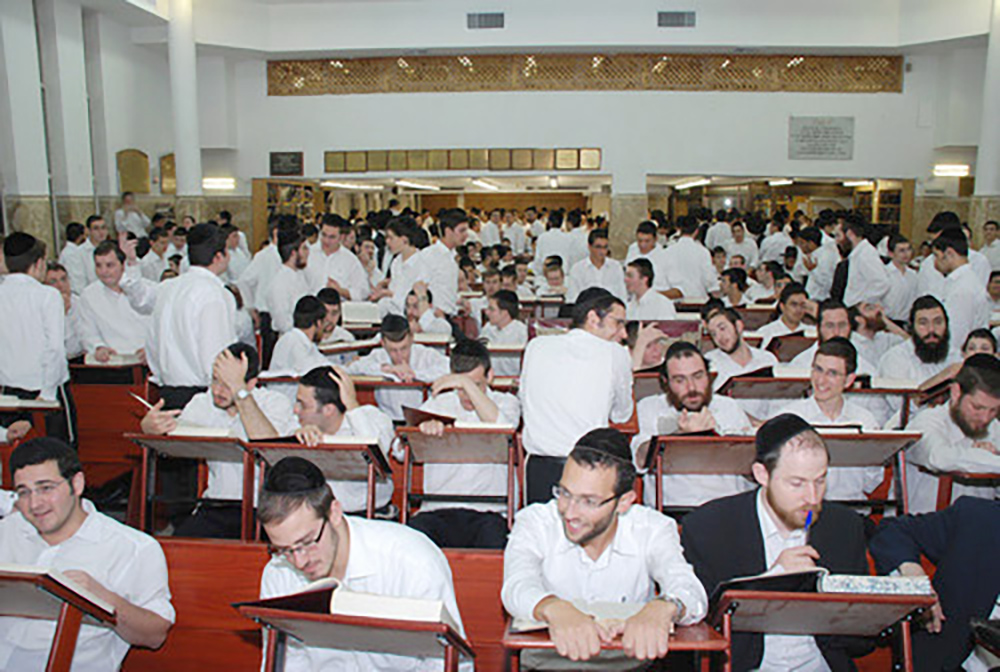We experience life through the medium of time. Each new moment brings with it new opportunities as we move along the spectrum of time. Amidst the constantly moving wave of time, the chagim are specific, unique points in time that carry with them special energy. Each holiday is a chance to tap into the theme inherent to that point in time. Before we can delve into the specific theme of Shavuot and what this unique point in time holds for each and every one of us, we must first understand time on a larger scale.
The Nature of Time
The assumed and widely accepted understanding of time is that it moves in a straight line. Hashem created our world of space and time, and since its inception time has been moving inexorably forward. Along this line of time is the past, present, and the future. If we were to move backward on this line of time, we could peer through history and find Avraham Avinu at the Akeida, Moshe Rabbeinu receiving the Torah, and the Rambam writing the Mishneh Torah. Our current experience is taking place in the middle of the line, and if we could move forward along the line we would see events that have not yet happened. However, there is a major challenge to this theory.
There is a piyut in the Pesach Haggadah (U’vchen Va’amartemm) which states that Avraham Avinu served matzah to the three angels who visited him because it was Pesach at that time. Rashi quotes this opinion on the Pesukim in Bereishit (Bereishit 19:3) and says that Lot did the same for the malachim who came to Sedom. How can this be? The mitzvah of matzah originates from the event of Yetziat Mitzrayim–an event that would not occur for another few centuries!
Circles in Time
To understand why Avraham and Lot served their guests matzah before Pesach even occurred we must develop a deeper understanding of time. Time does not move along one continuous, straight line; it actually circles around in a repeating yearly cycle. As the Ramchal explains, Hashem created thematic cycles of time, where each point in the year holds unique spiritual energies. Rosh Hashanah, Yom Kippur, Sukkot, and all the chagim are each associated with their own unique spiritual themes in time.
This deep understanding transforms our perception of time. We don’t celebrate freedom each year on the 15th of Nissan because that’s when the Jews were freed from Egypt, rather the Jews were redeemed from Egypt on the 15th of Nissan because that is zman cheiruseinu, the time of freedom. That power of freedom is what allowed the Jews to escape the slavery of Mitzrayim. This is why Avraham and Lot ate matzah long before the actual geulah. Matzah represents freedom, and Avraham and Lot tapped into the spiritual waves of freedom that were inherent at that point in time. They were not commemorating a historical event, they were tapping into the deep energies of time inherent at the point in the circle. So too, we do not simply commemorate a historical event as we experience each holiday, but rather, we tap into the deep energies inherent at that point in time. Thus, it is clear that time not a continuous line, but a circle.
Spirals in Time
However, even the circle analogy is limiting. If time were indeed a circle, each point of the year would simply be a recreation and repetition of that point from the previous year, from the previous time around the circle. That would be pointless. We do not seek to re-experience the past each year. Our goal is to expand upon what we have created year by year, so that this year, when we return to that same point on the circle from last year, we are in a fundamentally different place. Each Rosh Hashana should be higher than the previous one, each Pesach, a new Pesach, each Shavuot, a new Shavuot. Through our growth and ascension we are able to convert the two-dimensional circle into a three dimensional spiral, traversing along the same circle at ever greater heights. We maintain the circularity while achieving ascension.
Re-Experiencing Shavuot Every Year
Now that we understand the concept of time, and the importance of tapping into the unique theme of each point of time in the systematic process of ascension, we must delve into the specific theme that Shavuot presents. What is the power and potential inherent in this time of the year, and how can we harness it to grow along our ascending, spiraling path?
On Shavuot, there is a custom to stand during the Torah reading. Rav Yosef Dov Soloveitchik explains that we stand during Torah reading on this day because we are recreating the experience of Matan Torah, when the entire Jewish People stood around Mount Sinai to receive the Torah. On Shavuot, we do not simply remember what once occurred, we relive the experience as we tap back into the power of kabbalat ha’Torah, receiving and accepting the Torah. We do not simply repeat this process each year, rather we reaccept the Torah on an entirely new level, as fundamentally higher beings, growing through each revelation of Torah from years past. Kabbalat haTorah this year is at the same point along the circle as last year, but one rung higher on the spiral. In a true sense, we are receiving the Torah anew, in a new dimension of time and spiritual energy.
What is Torah?
If Shavuot is the time of kabbalat Ha’Torah, to truly understand what we are trying to experience on Shavuot we must first understand what Torah is. Scholars may refer to it as a history book, others may think of it as a book of laws, or a source of Jewish wisdom, while still others see it as an object of myth and delusional reverence. However, the Torah is something deeper than all of these things, and to truly understand the importance of kabbalat ha’Torah we must understand the Torah’s depth and power.
Torah is not simply a guide to living a life of truth within the world that we live in, it is actually the blueprint and DNA of this physical world. In other words, our physical world is a projection and emanation of the deep spiritual reality described in the Torah. This is the meaning behind the famous midrash that says, “Istaklah b’Oraisah u’barah almah,” Hashem looked into the Torah and used it to create the world. Torah serves as the blueprint of the world–the physical world is an emanation and expression of Torah, the spiritual root of existence. To illustrate this concept, imagine a projector. The image that you see on the screen emanates from the film in the projector, so that everything you see on the screen is simply an expression of what’s contained within the film. So too, every single thing that we see and experience in the physical world stems from the spiritual root–the transcendent dimension of Torah.
Similarly, the trees you see outside originally stemmed from a single seed. Each and every one of us as well originated from a zygote, half a male and half a female genetic code. From that single cell ultimately manifested a fully developed and expressed human being. You are the expression of your original seed, just like the world is the expression of its original seed and root- the Torah.
Thus, the world in which we live is, in fact, an avenue to the spiritual–we can access the spiritual, transcendent world through this one because the two are intimately, intrinsically connected.
To illustrate this concept, think of the way in which other human beings experience and understand you. All they can see of you is your physical body. They cannot see your thoughts, your consciousness, your emotions, your soul. All they can see is your words, actions, facial expression, and body language–meaning, the way you express yourself within the world. They cannot see your inner world, but they can access it through the outer expressions that you project. The same is true regarding human beings trying to experience Hashem and the spiritual. We cannot see the spiritual, we cannot see what is ethereal and transcendent, only that which is physical. However, we can use the physical to access the spiritual root, we can study the Torah’s expression in this world to understand its spiritual root.
The Gift of Torah
Hashem gave us the Torah in order to guide us on our spiritual journey in this world. Shavuot is therefore not a call to be transcendent, angelic beings, lofty and perfect, beyond the struggle innate within the human condition. This is not permission to deny our humanity and restrict our sense of self. This is a calling to be human, to be the ultimate human, to bring transcendence and spirituality into this world. We don’t aim to escape this world, we aim to transform it. Kedushah in not transcendence or escapism, it’s marrying transcendence with the immanent. This is what Torah comes to teach us, how to uplift our physical experience and connect it to the spiritual. When done right, Torah enables us to uplift every aspect of our worldly experience to something higher, holier, and more meaningful.
This Shavuot
Our job is to make this Shavuot the next step in our evolutionary spiral through time. We must not only reaccept what we have already accepted, we must take it to the next level, the next rung up. We don’t simply remember, we build; we don’t repeat, we ascend. Let us think about how we can make our acceptance of Torah this Shavuot the very greatest yet.




